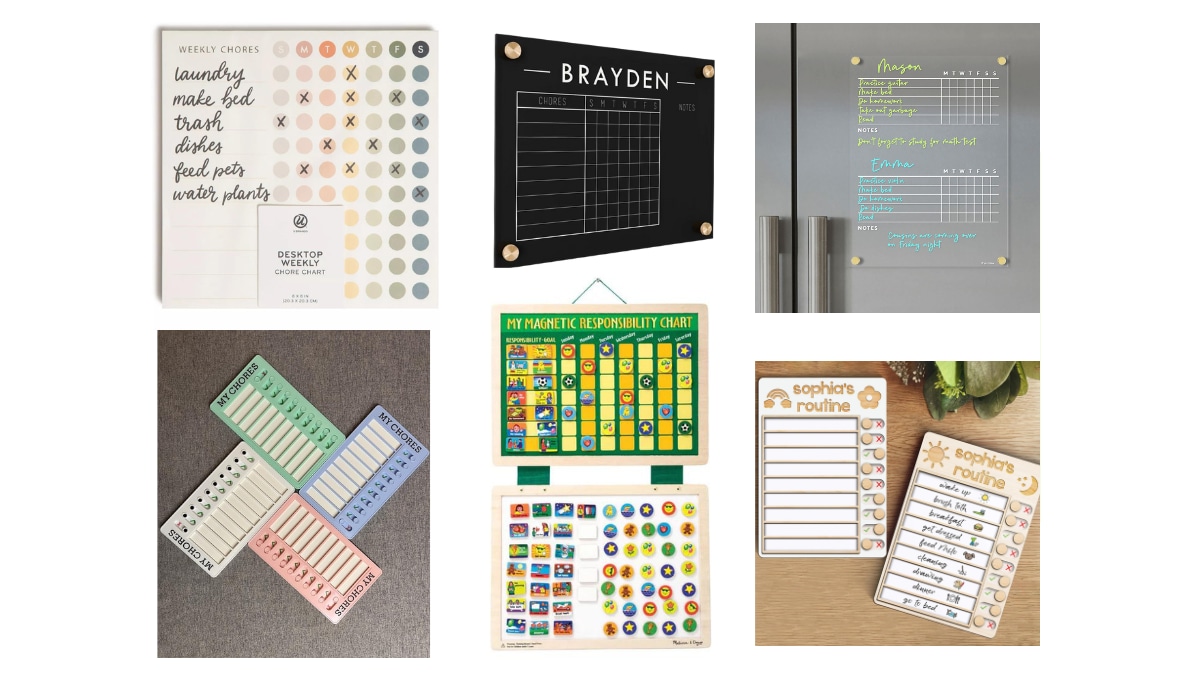In every household with growing children, there is always an endless list of tasks to be done. Experts agree that including kids in the division of household chores may be the best decision for everyone. When trying to keep all the wheels in motion, using chore charts with kids can help everyone pitch in and stay organized.
Nilou Esmaeilpour, clinical director and registered clinical counselor at Lotus Therapy and Counseling in Vancouver, British Columbia, says chores give children a sense of responsibility and feeling of empowerment. She says, “As children perform different tasks, they realize their input becomes vital, and this makes a difference, thus boosting their self-esteem and making them feel capable of doing things.”
Chore charts can help kids and families communicate what needs to be done in fun and creative ways and work collaboratively. Explore a variety of chore charts to buy, download or DIY, as well as tips on how to make them effective.
Choosing the right chore chart for kids
Choosing the right chore chart often comes down to a chart that will work best for the ages and personalities of the children in the home. Cassandra Raphael, mom and child and adolescent psychiatrist in New York, says when you choose age-appropriate chores, ”it supports a child’s ability to succeed at the assignment.” She also says a challenge is OK. “Even if a child requires encouragement or support at the outset, with time, the association between the task and feelings of improvement, efficacy and success reinforce regularly performing the task.”
13 chore chart ideas for every family
Once you know what you’re looking for, it might be easy to decide on which chore chart is right for you. Below is a list of various chore chart ideas that span from home decor to DIY for kids of all ages.
Interactive
For very young children, a colorful, interactive chart might be a fun and easy way to keep kids engaged in building healthy habits from start to finish.
1. Magnetic responsibility chart
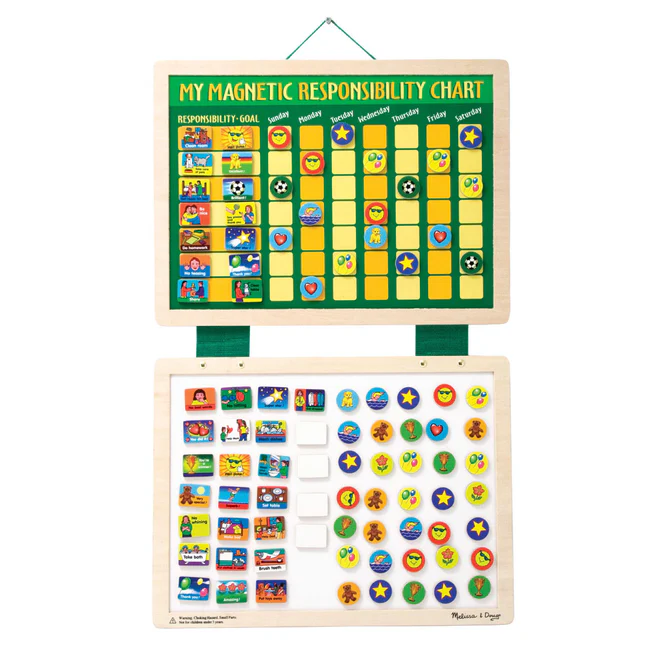
This hanging responsibility chart designed for kids 3+ includes spaces for each day of the week and 90 different magnets to help establish routines and chores like Clean Room and Set Table. There are also ones that include phrases of positive reinforcement like “Well Done!” and “Excellent!”
Where to buy: Magnetic Responsibility Chart, ($28, Melissa and Doug)
2. Personalized wooden chore chart
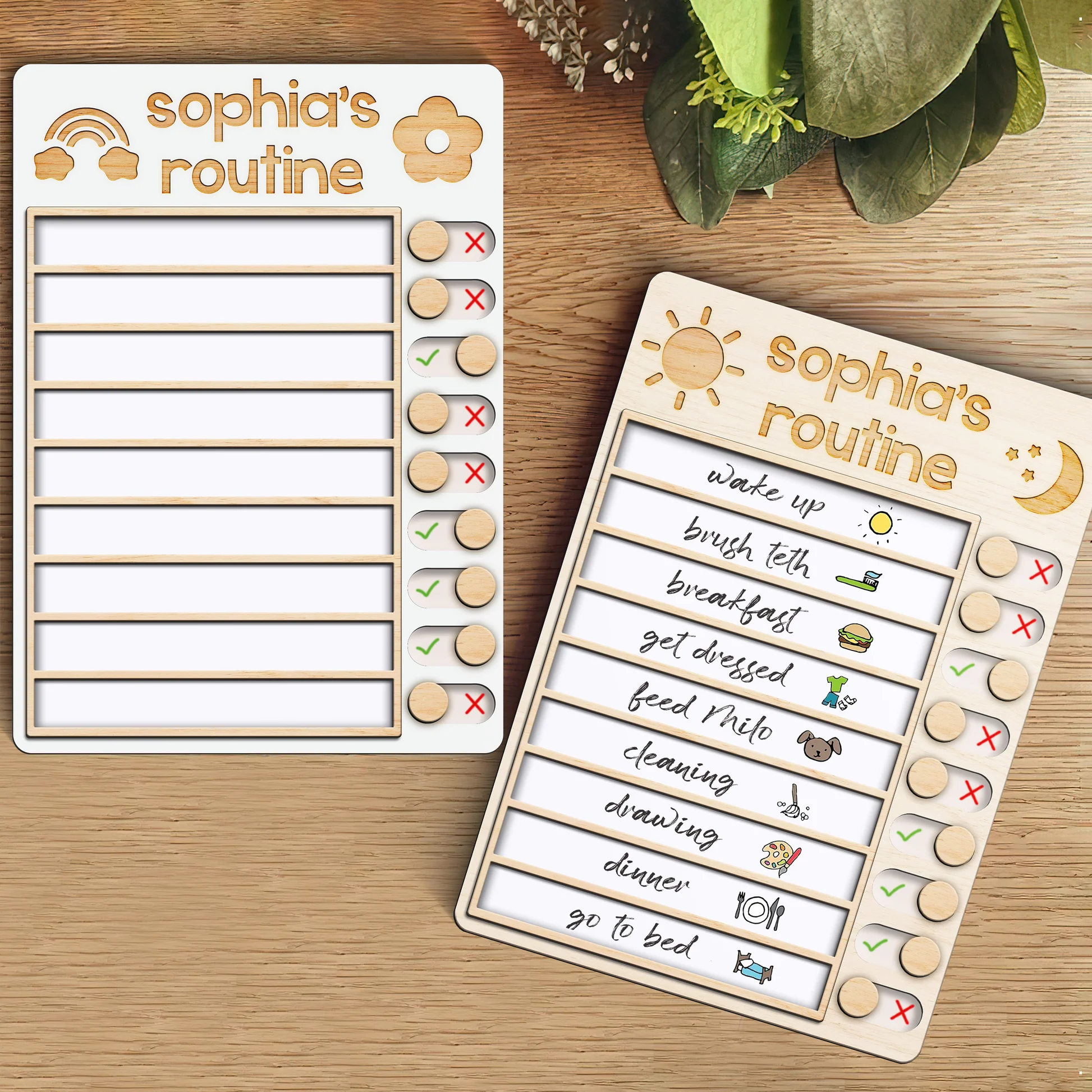
Check out this wooden chart for young children that can be used for daily routines and chores. Small children can slide the wooden knob over a red X to show a green checkmark once the task is complete. The chart comes with 150+ stickers and could be a great chore chart idea for kindergartners. Plus, it can be personalized with any name.
Where to buy: Wooden Routine Chart ($30, Kindly Toys)
3. Sliding chore chart
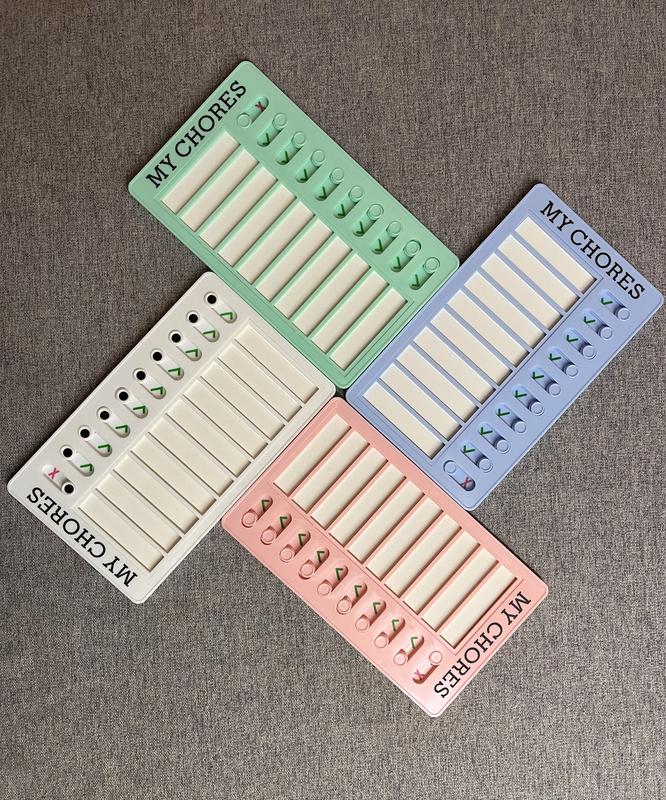
TikTok Shop offers a similar sliding chart in four different colors that is customizable. Sized tor little hands, this chore chart is a great inexpensive option for households with multiple children.
Where to buy: Sliding Routine Chore Chart ($3-6, TikTok Shop)
DIY
Creating your own DIY chore chart can be a way to ensure you have a system that is unique to your family or child.
4. DIY Chore Jars
WhatsUpMoms YouTube creator, Brooke Mahan, put together these cool DIY chore jars. One jar is labeled “To Do” while the other is labeled “Done.” The sticks in the jars are pre-labeled by task. When the assigned task is complete, the corresponding stick gets transferred into the “Done” jar.
A printed chore chart could be a great option for kids who love to write.
5. Weekly chore chart notepad
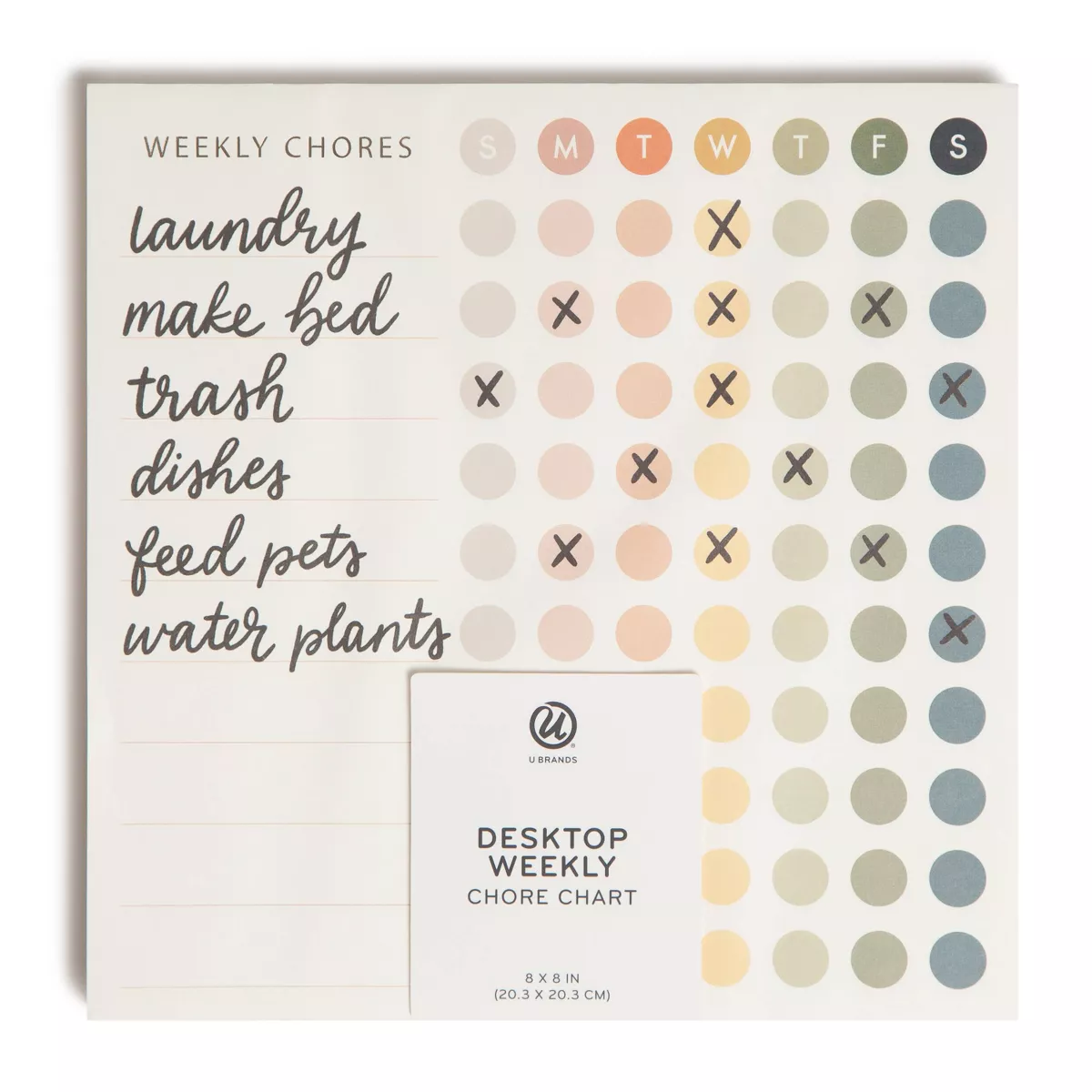
This printed chore pad can be kept on the desk of a middle grade or high schooler who can keep track of their own chores independently. It has 52 weeks of printed sheets that include a customizable column and a color-coded circle for each day of the week.
Where to buy: Desktop Weekly Chore Chart Pad ($5, Target)
Digital
A digital chore chart is an option for busy kids and families who are always on the go.
6. The Family Tools App
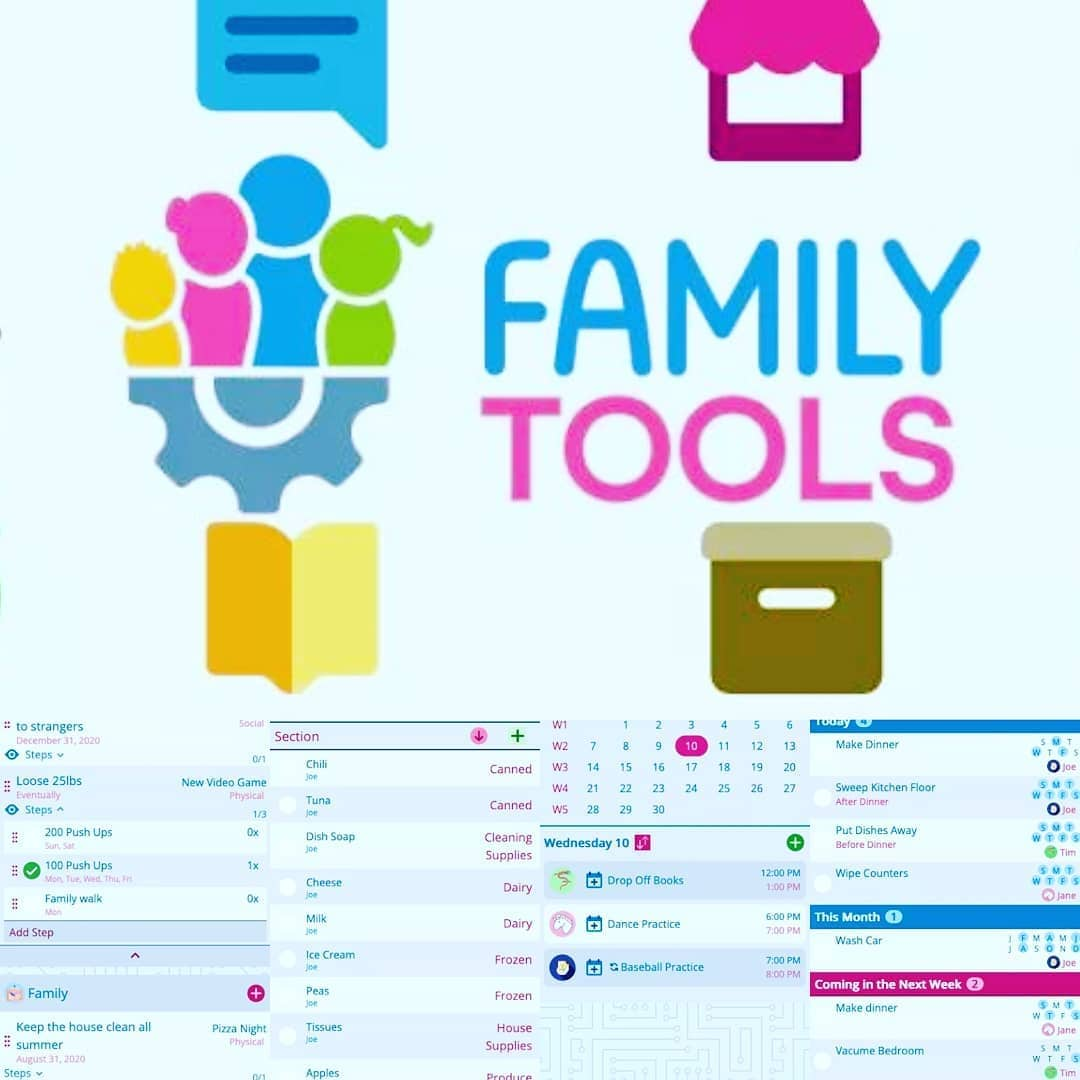
The Family Tools app helps to organize chores and responsibilities for the entire family. Each person in the app is able to view all members lists and stay up to date as chores get completed.
Where to download: Family Tools App (free basic version available; Premium $25/year)
7. The Homey App
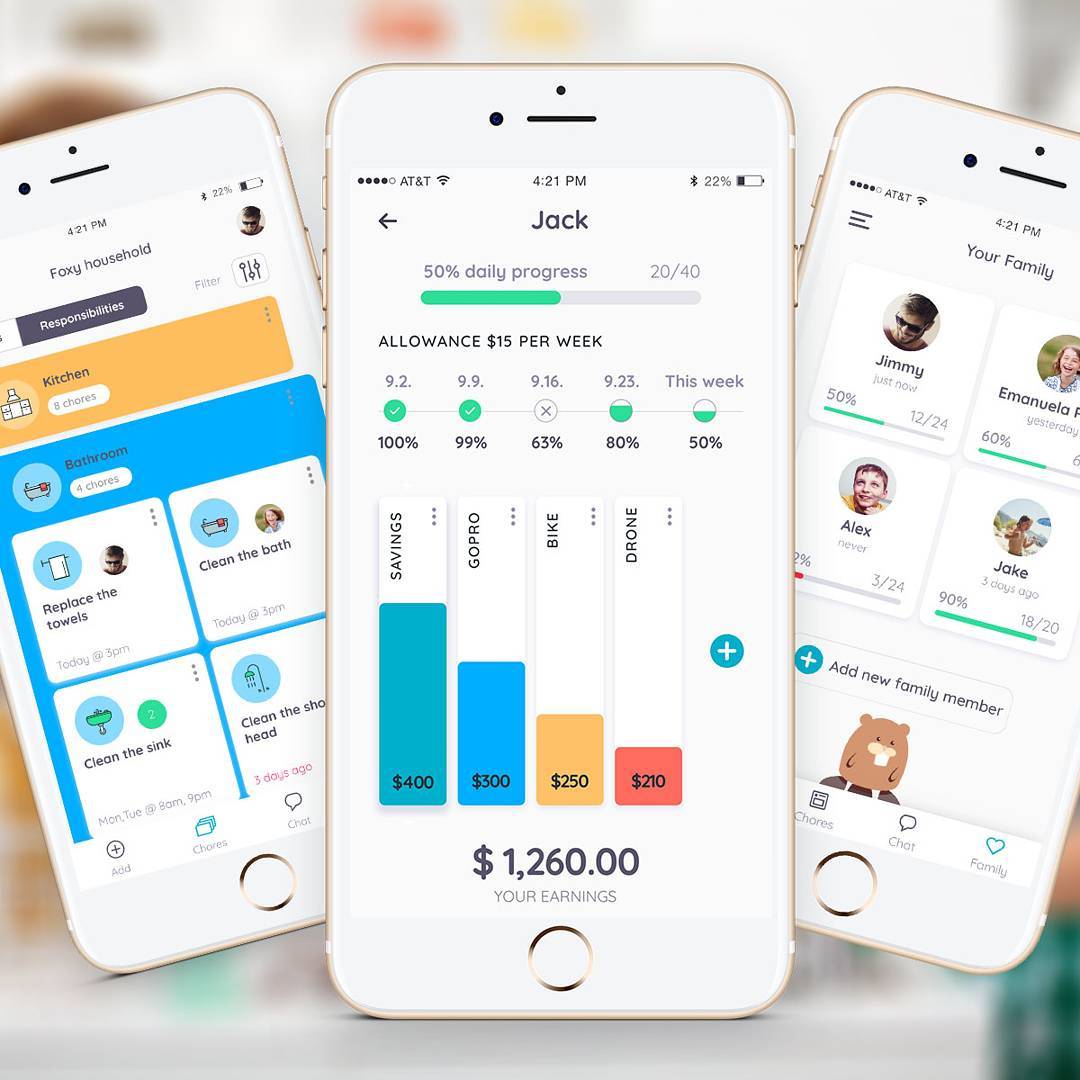
The Homey App has an illustrated interface that even very young children can navigate. It also includes a way to transfer an allowance to kids bank accounts and a chat and heart feature for kids and their parents to interact.
Where to download: Homey App (free basic version available; Homey Unlimited $50/year)
8. Digital Framed Chore Chart
The Skylight Calendar comes as a 10, 15 or 27-inch visual display chart that is both digital and interactive. It combines a calendar and multiple features to organize family tasks and responsibilities and can be mounted on a wall or sat on a table to be seen and updated by each family member.
Where to buy: The Skylight Calendar (starting at $160, Skylight)
Mountable or magnetic
For older children who take more of a collaborative role in household chores and responsibilities, a mounted calendar chore chart may be a good fit.
9. Acrylic family calendar

When mom Jenna Perez from Naples, Florida, was considering chore charts for her three teens, ages 13, 16 and 17, she decided on a mountable dry-erase calendar by Circle & Square. She says, “I use this for kids’ activities and things they need to do around the house but also for grocery lists and the menu for the week.”
Where to buy: Mountable Acrylic Family Calendar ($34, Circle & Square)
10. Magnetic chore chart for multiple children
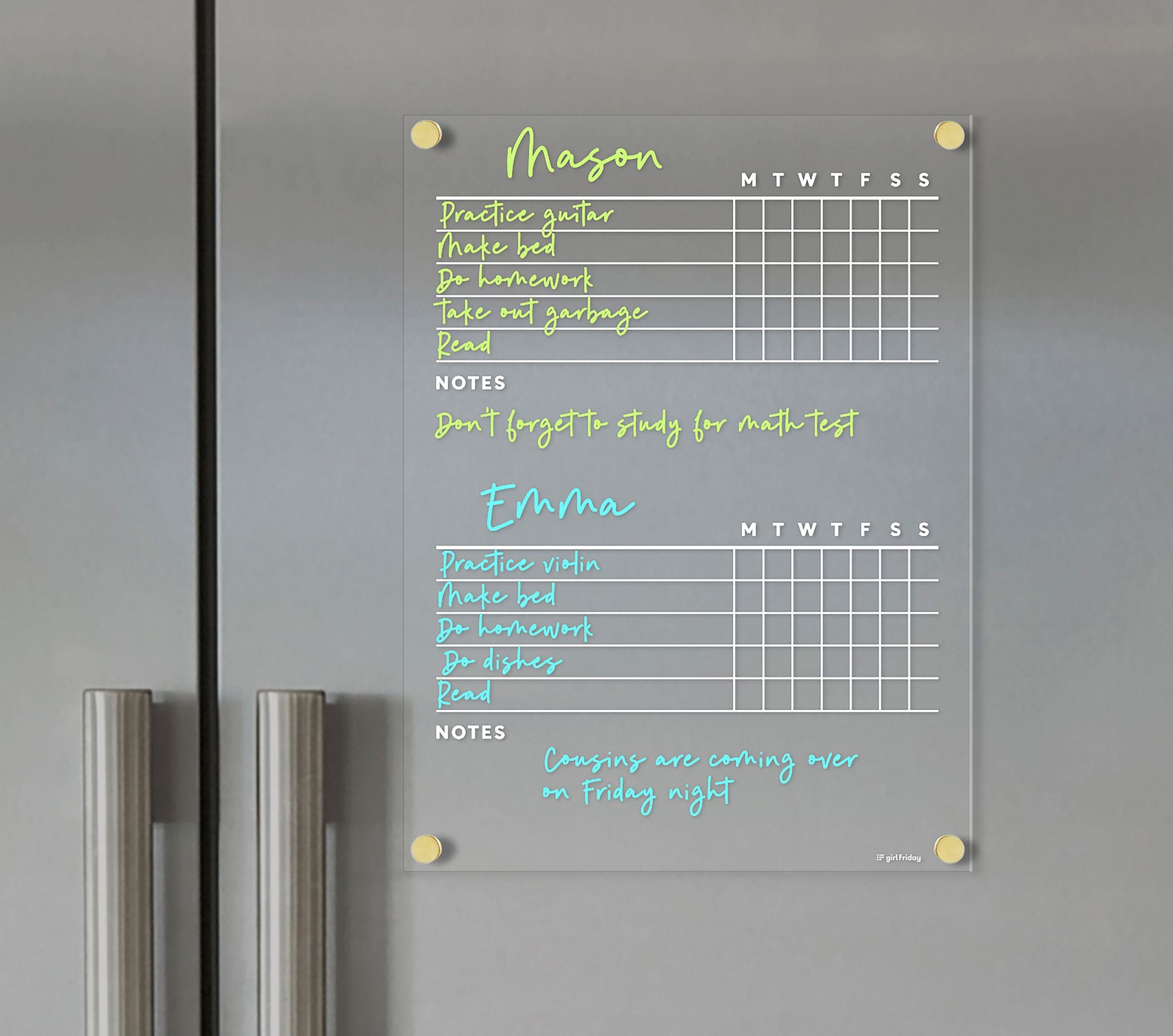
Pottery Barn Kids provides a similar mountable acrylic option that can be ordered for one or two children. The clear dry-erase chart can also be mounted on the refrigerator.
Where to buy: Magnetic Chore Chart ($75, Pottery Barn Kids)
11. Magnetic dry-erase chore chart and calendar
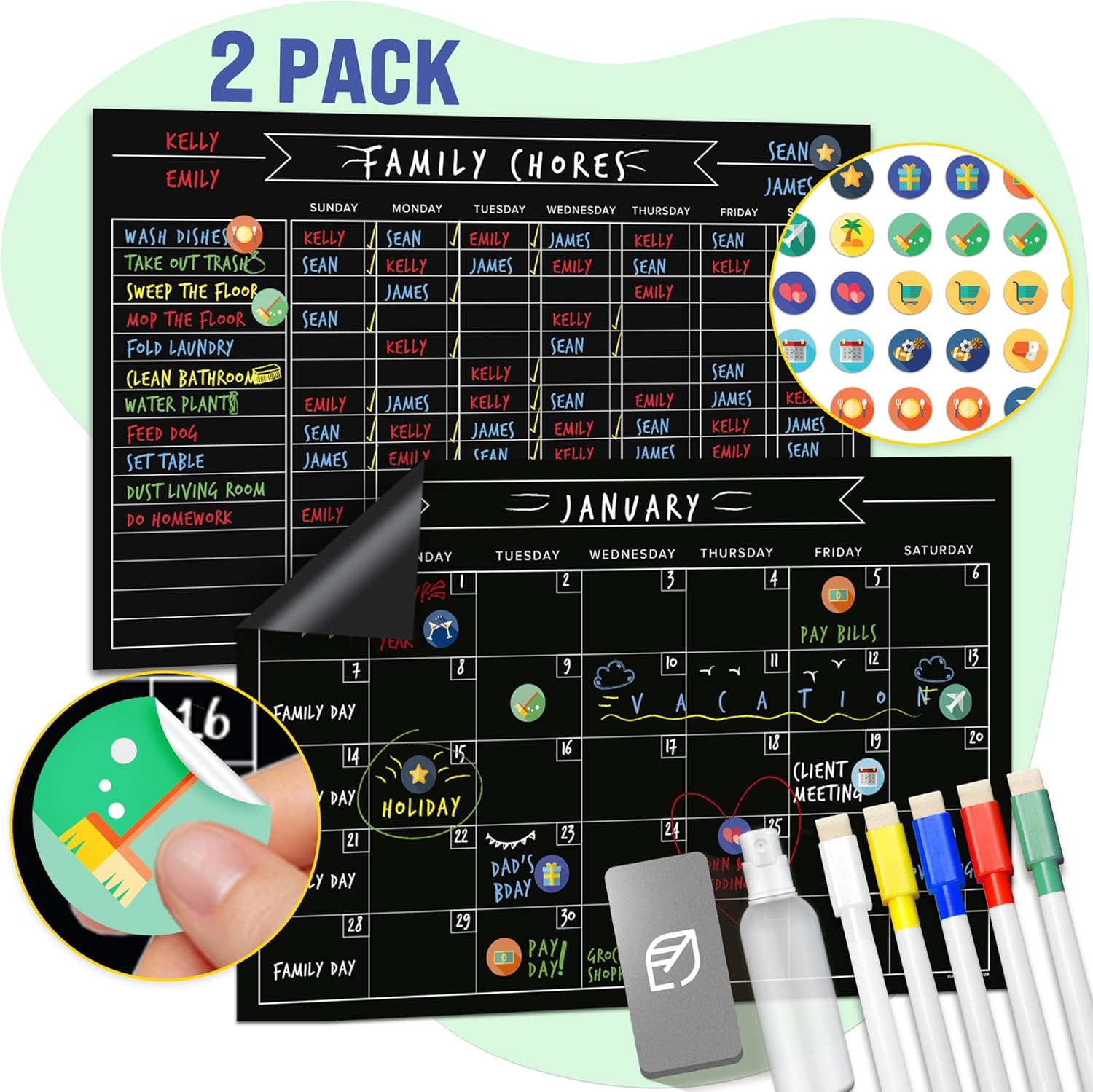
Magnetic, dry-erase chore charts that can be adhered to the family refrigerator are a lower-cost option for parents and older kids to write on and update calendars and track task lists.
Where to buy: Magnetic Dry-Erase Chore Chart and Calendar ($16, Amazon)
Free and simple
One easy way to get started implementing chore charts is to begin with a free and simple chore chart that is easy to maintain. Here are a few free downloadable options to try.
12. Free printable color-coded chore charts
Fox Farm Home offers a free weekly, printable chore chart that includes a place to list the daily and weekly chores and a color-coded checklist for each day of the week.
Where to download: Free Printable Color-Coded Chore Charts (Fox Farm Home)
13. Free printable chore chart for teens
iMOM has a free downloadable chore chart for teens that is designed as a simple spreadsheet with a column to list the chores and one for each day of the week. It has two different options for color combinations.
Where to download: Free Downloadable Chore Chart for Teenagers (iMom)
Things to look for in a chore chart
Before creating or buying a chore chart, you may want to take a few things into consideration:
What kind of chore chart do you want?
Consider if you want a physical or digital responsibility tracking system. Chore charts can be magnetic, interactive, DIY or a downloadable app for the phone or tablet.
How do you want it to look?
Consider the visual appeal of the chart. This includes whether the chart has particular colors, symbols or character themes everyone will love.
What do you want the chore chart to include?
Consider what elements the chart includes for ease of use. Some chore charts include stickers and have reward systems built in.
Where do you want it to go?
Consider location for physical charts. Will it be stored in your child’s room or in a common area where all family members and caregivers can view and access.
How often will you update the chart?
Consider how often you will update the chore chart and if it will be easy for kids to manage on their own if necessary.
Common chore chart challenges and solutions
What do you do when kids resist doing chores?
“My kids don’t like me to yell,’’ says Perez, ”so I will remind them a couple of times.” If she doesn’t see them doing their chores after a few nudges, Perez says she introduces appropriate consequences for each child. “They will not be able to go out or will lose privileges, such as video games.”
“It can be frustrating for a grown-up if a child is consistently unable or unwilling to do chores,” says Raphael. She recommends working to understand the obstacles kids may be facing or what other issues may be at play. She adds, “Consider that another conflict or a separate matter may need attention. Talk with your primary care clinician for a referral to a qualified mental health professional as needed.”
5 strategies for chore chart success
To encourage kids at an early age to participate in household responsibilities, Raphael offers the following tips:
1. Make it a daily habit
Kids may begin to recognize some chores as part of their daily habits. Raphael says when kids see some activities go through a cycle of “mess up” and then “clean up,” like wiping the counter after morning hygiene or cleaning up toys before bed, parents and caregivers can emphasize these activities as part of a routine, rather than a chore.
2. Be consistent and implement a schedule for when chores will be done
Both of these routine actions “allow the practice of tidying and organizing to feel more like routine than a pending disagreement.”
3. Avoid gender-based assignments or a skewed distribution between similarly capable children
“This can be isolating and contribute to resentment. A child who benefits from the chore being completed should likely have a turn to complete it. Also, rotating the assignments allows children to demonstrate strengths and take opportunities for improvement in different domains.”
4. Be a role model
“Grown-ups’ approach to housework influences how children approach them as well. Identify ways that make housework more enjoyable — for example, playing music, listening to a podcast or sharing a pleasant conversation.”
5. Provide guidance or instruction
“Be helpful but try to resist taking over the task from children. This can undermine the value of their contribution and discourage their participation.”
The bottom line
Once kids and families get in the groove, keep the benefits of doing chores in mind. Experts agree kids who have household responsibilities may gain lifelong benefits.
“Chores teach kids valuable skills that will stand them in good stead when they grow older,” says Esmaeilpour. “Through household chores kids learn how to regulate time, prioritize activities and see commitments through to their conclusion. Consequently, “these life skills, while useful to keep a home running well, can easily translate into responsibilities expected of them both at school and later in the workplace,” she says.
